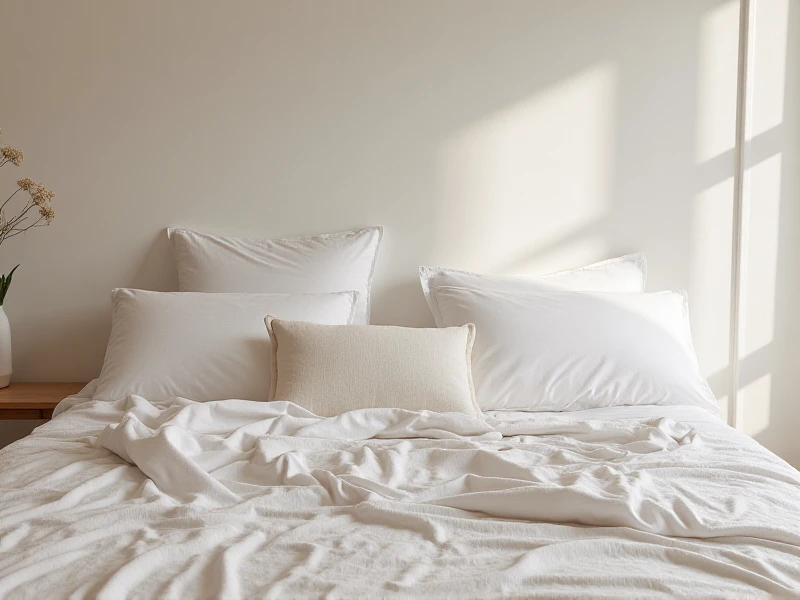Transform Your Sleep with the Best Bedding Choices
2025-06-05

Ever wondered why some nights you drift off instantly while others leave you tossing and turning? Often, the answer lies right under you: your bedding. High-quality bedding isn't just about aesthetics; it directly impacts your sleep quality, comfort, and overall health. We spend roughly a third of our lives in bed, so investing in the right sheets, pillows, and comforters can transform restless nights into rejuvenating ones. In this guide, we'll dive into how to choose the perfect bedding for your needs—covering types, materials, and practical tips. Whether you're updating your bedroom or looking for a gift, you'll leave with insights to help you sleep like royalty without breaking the bank.
Why Bedding Matters More Than You Think
Bedding plays a crucial role in regulating temperature, reducing allergens, and promoting relaxation. Poor-quality materials can trap heat, cause skin irritations, or disrupt your sleep cycles. For instance, scratchy sheets might lead to midnight awakenings, while overly thick comforters can make you sweat in summer. By selecting bedding that suits your body and climate, you're not only enhancing cosiness but also boosting immune function and mood. Studies show that ideal bedding reduces stress hormones and improves deep sleep phases. Plus, stylish options can elevate your bedroom decor—making it a sanctuary you're eager to retreat to.
Types of Bedding to Consider
When building your bedding set, focus on key components for a coordinated look and feel. Start with fitted and flat sheets; these are your direct contact layers, absorbing oils and sweat. Aim for breathable fabrics to prevent overheating. Next, pillowcases protect your pillows while adding comfort for your face and hair. Choose ones with soft weaves to minimise wrinkles and preserve skin health. Don't overlook duvet covers or comforters—these provide insulation and are perfect for layering in cooler months. Quilts or blankets offer extra warmth and texture. For a complete setup, include shams for decorative pillows or bolster pillows for lumbar support.
Mixing and matching bedding types allows customization. If you're a hot sleeper, opt for lightweight bamboo sheets paired with a breathable cotton duvet. Cold sleepers might prefer flannel sheets and a down comforter. Always consider sheet sizes: ensure they fit your mattress snugly (e.g., queen sheets for a queen bed) to avoid slipping and discomfort.
Materials and Their Benefits
The material of your bedding determines everything from comfort to durability. Cotton is a classic favorite for its breathability and softness. Egyptian cotton offers luxurious thread counts for silky feels, while organic cotton is hypoallergenic and eco-friendly—great for sensitive skin or allergy sufferers. Linen, made from flax, is another top pick; it’s highly absorbent, wicks moisture, and becomes softer with each wash, ideal for year-round use. Bamboo-derived fabric is gaining popularity for its sustainability, antibacterial properties, and cooling effects—perfect for warmer climates.
For those craving luxury, silk bedding provides a smooth, cool surface that reduces friction on skin and hair, helping prevent wrinkles and frizz. It's lightweight and hypoallergenic but requires gentle care. Polyester blends are budget-friendly and wrinkle-resistant but can hold heat; use them as secondary options. Always check thread counts: 200-800 is standard, with higher counts feeling smoother. Remember, natural fibers like cotton or bamboo are easier on the environment and often last longer with proper maintenance.
How to Choose the Right Bedding
Selecting bedding involves personal preferences and practical factors. First, identify your sleep habits. If you overheat at night, prioritize cooling fabrics like bamboo or percale cotton. If you chill easily, cozy flannel or microfleece adds warmth without weight. Seasonal changes matter, too—swap out heavy winter comforters for lighter summer quilts to maintain comfort.
Fit is equally important. Measure your mattress depth before buying sheets; deep-pocket models accommodate thicker mattresses. For pillows, match the case size to your pillow—standard, queen, or king—to avoid gaps. Color and pattern affect mood; neutral tones like whites or grays create a calming vibe, while bold designs inject personality. Washability is key: machine-washable bedding saves time, especially for families or pet owners. Aim for durable options that withstand frequent laundering without fading.
Finally, consider sustainability. Eco-friendly bedding often features GOTS-certified organic materials or recycled components. Brands like Parachute or Brooklinen offer transparent sourcing, giving you peace of mind. Start by reading online reviews and feeling textures in stores—if your budget allows, sample a pillowcase or sheet set before committing.
Caring for Your Bedding
Proper care prolongs lifespan and maintains comfort. Wash sheets weekly in cool water with mild detergent to remove sweat and oils, preserving fabrics. Air-dry natural fibers like linen to prevent shrinking, while tumble-drying cotton on low heat keeps them soft. Rotate pillows every few months and replace them every 1-2 years; use protectors to block dust mites. Store extra bedding in breathable cotton bags away from moisture to avoid mold.
Over time, upgrade pieces like pillowcases first—since face contact wears them faster—then expand your set gradually. Investing in quality bedding pays off; it can last years, saving money on replacements.
In summary, the right bedding revolutionizes your sleep space. By choosing suitable types and materials, you're investing in health, comfort, and style. Ready to upgrade? Browse top collections online for deals on sustainable, hotel-quality options—and say hello to dreamier nights ahead. Sweet dreams!
Category: